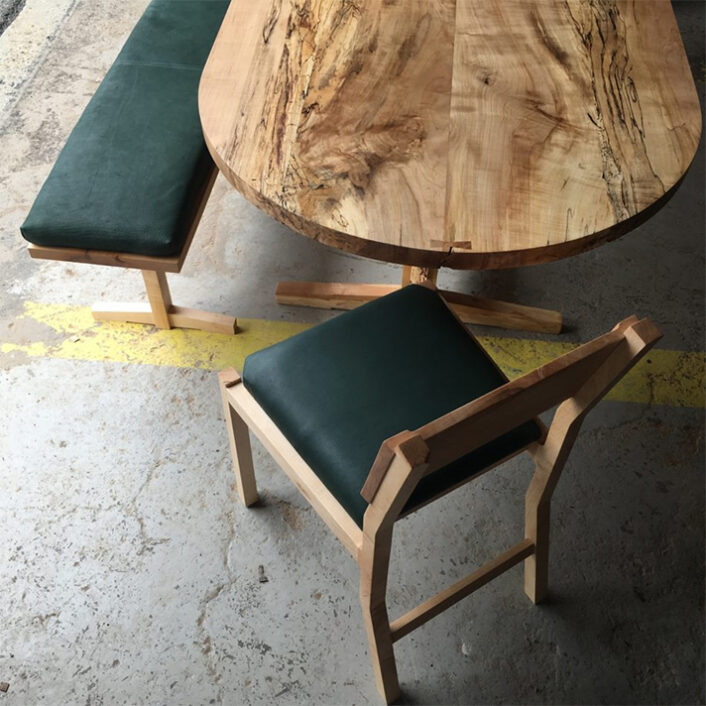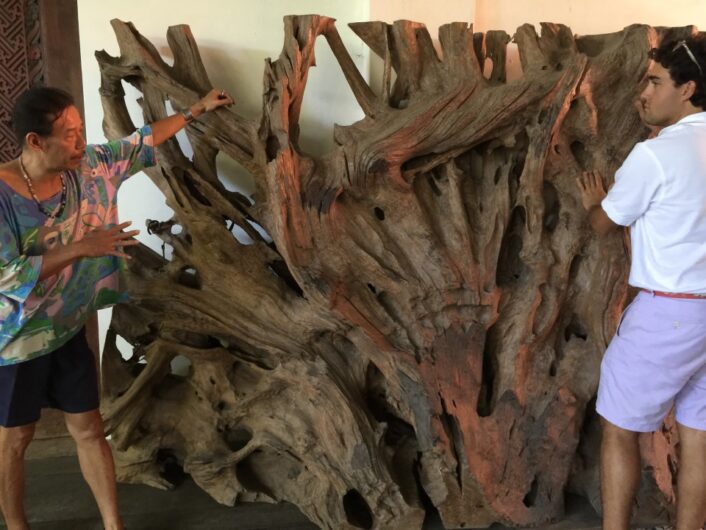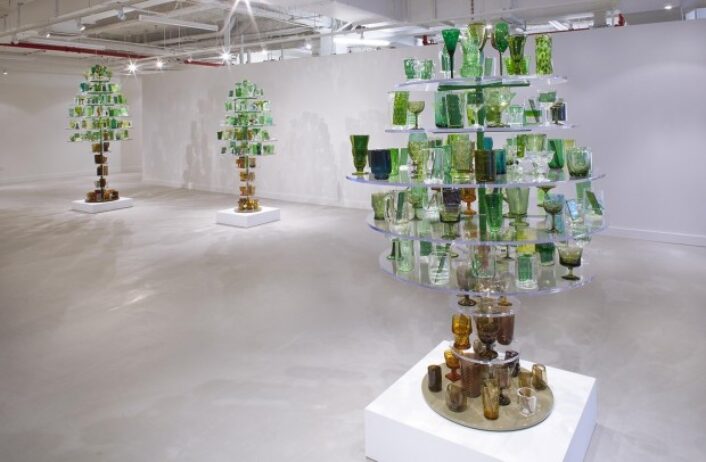“Troiane” is a short film directed by Stefano Santamato that tells the story from the trees’ points of view as they journey south from the Italian Alps to Syracuse, their final resting place.
Culture
Stefano Boeri’s “Dead Forest”
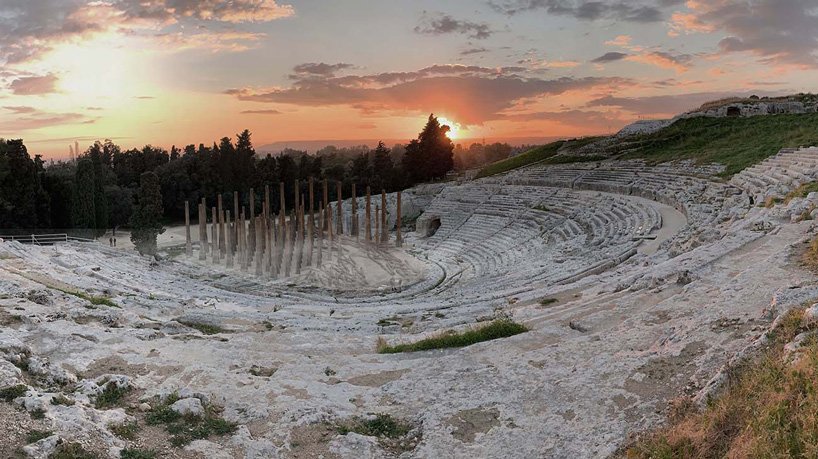
This took place in Southern Italy.
Image courtesy of: Design Boom
Since the pandemic deemed us unable to experience live entertainment, we thought we’d feature a story that we found fascinating. In 2019, the architect Stefano Boeri was asked to create the scenography for a project directed by Muriel Mayette-Holtz titled, “The Trojan Women of Euripides.” Equally exciting was the venue… the Teatro Greco of Siracusa.
The architect, along with his Milan-based firm, was thrilled to take on such a unique and adventurous project. Asked about his thoughts when when he was initially asked to produce this design, the architect said, (courtesy of an interview with UR Design), “When I have been asked by Antonio Calbi to imagine a stage project for The Trojan Women of Euripides at the Theater of Siracusa directed by Muriel Mayette-Holz, I thought from the very beginning to portray a Landscape more than a stage scenography.”
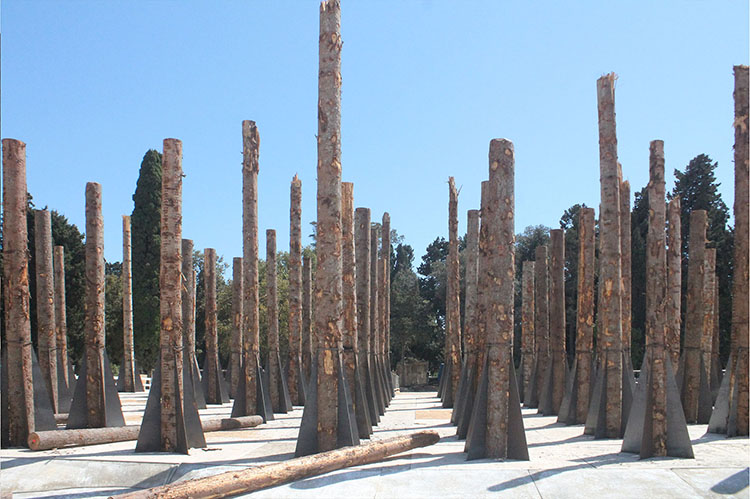
The Dead Forest
Image courtesy of: UR Design Magazine
The design was a beautiful juxtaposition of the Greek Theater’s background and the stage set. More like architecture than landscape, it is clear that the nature displayed on the stage is one of sheer devastation and destruction. There is not one ounce of greenery… all that is evident is a “forest” of tree trunks that appear amputated.
The inspiration for this sad staging is the story behind war. Here, the ancient stage brings forth a modern-day message that no one wins in a war; in fact, everyone loses. Boeri says it best (courtesy of Italian Ways), “The truth is that today a tragedy that comes from the depths of time is there to remind us the follies of men. This tragedy is performed on stage probably in a moment of history when the extremely long times of the evolution of the planet seem to coincide with our daily choices and force us to face our responsibilities towards the natural environment.”
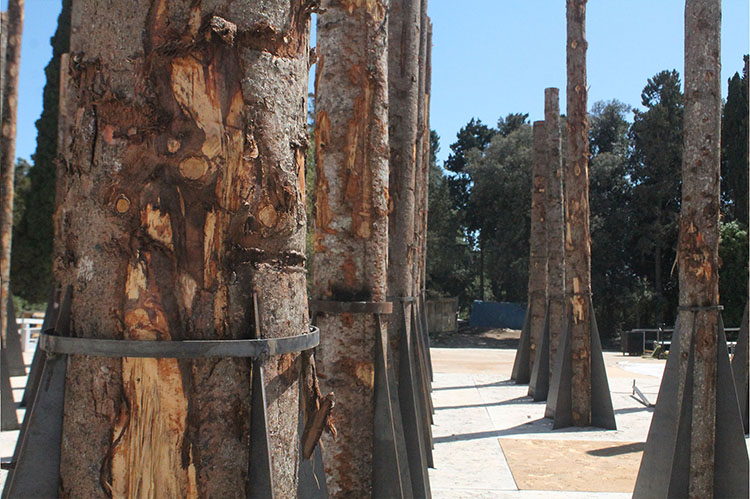
Not an elegant or vibrant scene… this is one that invites you to think hard and reflect.
Image courtesy of: UR Design Magazine
The subjects who make up the dead forest all come from one fated night in October 2018 when rain and wind tore down 14 million trees. As a result, the once picturesque and lush mountain landscape became a barren acopolyptic terrain. Beyond the look of sheer devastation was a severe environmental consequence. Unfortunately, this end-result will remain for years and years to come.
The scenography that Boeri chose was made possible by the 400 trunks repurposed from Prealpi Carniche, the unfortunate Italian Alps location. These spruces became the real-life protagonists as they played Trojan women one final time.

During installation…
Image courtesy of: Italian Ways
The director, Mjuriel Mayett-Holtz, imagines that the Trojan Women of our time are refugees escaping the horrors of their homelands in search of a better life. The victims might also be those of terror attacks or domestic violence. In direct reference however, the other victims are the trees that were destroyed.
The parallels between the Trojan women’s fates as their husbands were murdered and their remaining family members were taken away as slaves while their beloved Troy was vandalized to utter nothingness draws parallels with today’s current issues. Mayett-Holtz beautifully portrays this image.
Thanks to Stefano Boeri, Mayette-Holtz is able to beautifully bridge two tragedies that occurred 2,000 years apart… and two regions that are 1,500 kilometers from each other. In such, culture is seamlessly intermingled.
